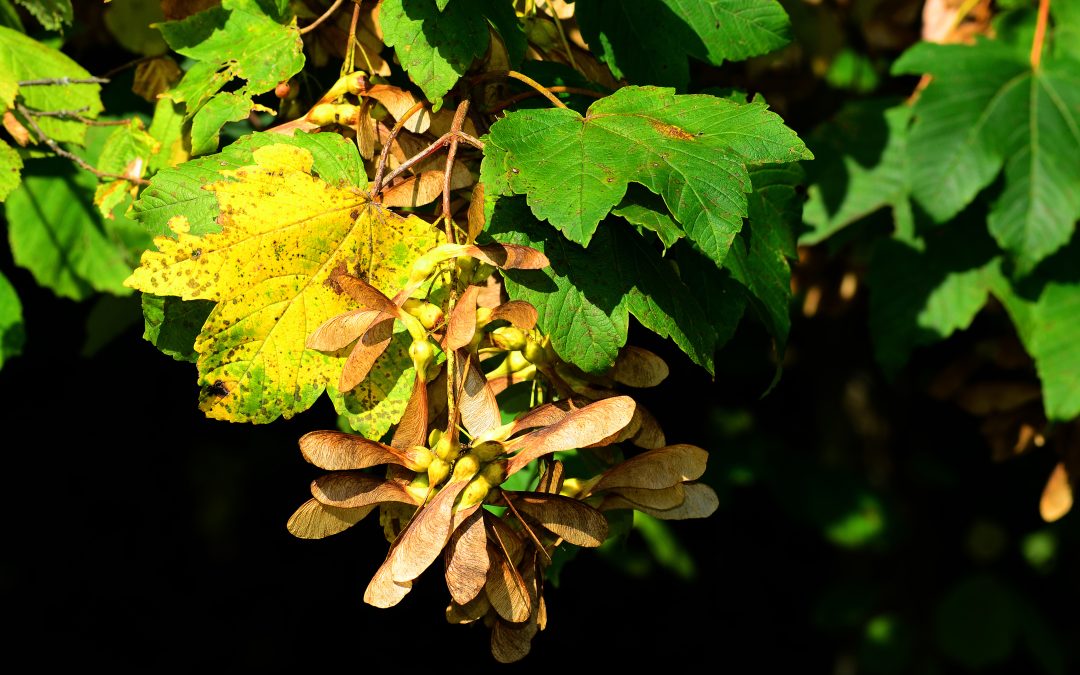Atypical myopathy (AM) is a serious, often fatal muscle disease in horses, commonly associated with the consumption of seeds or leaves from sycamore trees (Acer pseudoplatanus), which are toxic to equines. While it’s most frequently seen in the autumn, as sycamore trees shed their seeds, cases have been on the rise in the spring and winter months, especially during unseasonal weather patterns. These weather changes can contribute to the problem by causing sycamore trees to drop seeds or other parts of the plant earlier or later than expected, increasing the risk of poisoning.
Why is AM a concern?
The condition is linked to toxins (hypoglycin A and methylenecyclopropylglycine) found in sycamore seeds, leaves, and seedlings. Horses that ingest these toxins can experience severe muscle damage, weakness, and in some cases, death. The disease often develops quickly, making early detection critical. In addition to seasonal fluctuations in weather, factors such as grazing conditions and the presence of sycamore trees on or near grazing land can play a role in the increased incidence of AM.
Practical help to reduce the risk:
Here are some practical steps to help prevent atypical myopathy and manage grazing areas effectively:
- Monitor Tree and Seed Patterns – Sycamore trees can drop seeds at unpredictable times, especially during weather events like unseasonal warmth or rain. Regularly check the ground for fallen sycamore seeds, seedlings, or leaves, especially in areas where horses are grazing.
- Avoid Grazing Near Sycamore Trees
One of the most effective ways to reduce the risk of AM is to ensure that horses do not graze in areas with sycamore trees, particularly during the autumn and spring months when the seeds are most likely to fall. If this is not possible, regular monitoring and prompt removal of any fallen seeds is crucial.
- Provide Alternative Grazing Areas
If you have land where sycamore trees are prevalent, consider fencing off sections of pasture that are close to these trees and providing alternative grazing areas where horses can graze safely. Additionally, rotating grazing areas can reduce the exposure to sycamore seeds.
- Supplement Feeding
Offering supplementary feed in winter and spring can reduce the amount of time horses spend grazing on pasture. Providing hay and forage in controlled amounts can minimize the risk of accidental seed ingestion while helping to maintain the health of the pasture.
- Consider Grazing Management Practices
If you’re managing pastures with sycamore trees nearby, consider strategies like “sacrificial grazing.” This involves designating a specific area for grazing that you can monitor more closely, ensuring it is free of sycamore seeds. You can also implement rotational grazing to reduce the risk of contamination in high-risk areas.
- Inspect Pastures Regularly
Regularly inspect pastures for sycamore saplings or seedlings, especially after storms or during periods of unusual weather. These young plants can be just as dangerous as fallen seeds and should be removed immediately. Keeping pasture quality high by maintaining good grass cover can also reduce the attractiveness of areas where seeds might be present.
- Be Vigilant for Early Signs of Atypical Myopathy
Early symptoms: sudden onset of weakness, tremors, reluctance to move, and dark or reddish-brown urine.
If you notice any of these signs, contact your vet immediately. Early intervention may improve outcomes, but the disease progresses rapidly, so swift action is essential.
The unpredictable weather conditions of recent years have contributed to an uptick in atypical myopathy cases, affecting horses in the spring as well as autumn. By understanding the risks and taking steps to minimize exposure to sycamore tree toxins, horse owners can better manage grazing conditions and protect their animals. Regular inspection, grazing management, and being proactive about potential hazards can all go a long way in reducing the impact of this potentially fatal disease.
If you have any questions please phone 01782 898102

